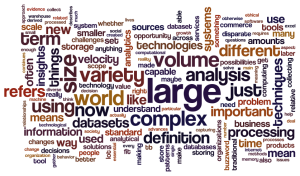
Self-Serve BI Demand Up, User Satisfaction Down

Despite a growing consensus among business users about the value of do-it-yourself data analytics, less than a quarter of the respondents to a recent survey said they have the means to use self-service business intelligence tools.
A review of self-service trends by BI software developer Logi Analytics Inc., McLean, Va., reported that more than 90 percent of executives surveyed endorsed the ability to access data with out IT assistance. But only 22 percent said they have access to or use self-service BI tools when needed.
Moreover, the survey found a large gap between demand for self-service BI tools and the users’ satisfaction with current capabilities. That has prompted business users to demand better functionality in areas like the formatting reports or dashboards.
The self-service BI survey of more than 600 business and technology executives found that analyzing data to create visualizations, for example, was sought after by 39 percent of business users. Yet, only 16 percent said they were satisfied with the functionality of current BI tools.
Self-service BI is defined as the capabilities of a software tool or application to enable business users to access, analyze and visualize insights and then share formatted information in reports or dashboards without IT assistance. According to the survey, the health care and technology sectors are among the most underserved industry sectors along with corporate finance and marketing departments.
Due to either a lack of access or limited functionality of current self-service tooks, 79 percent of business users said they continue to use spreadsheets rather than analytics tools.
“Business users are looking to become more self-reliant and less dependent on IT, but are lacking the tools to do so,” Steven Schneider, Logi Analytics’ chief product officer, said in releasing the survey. Schneider predicted a “shift in the market, where BI tools will focus more on the BI needs of the average business user, which will help drive adoption.”
Not coincidently, the analytics software vendor recently unveiled a self-service module touted as allowing users to choose a set of trusted data to create tables, charts and other visualizations along with dashboards and reports based on queries that are generated automatically. No assistance from the IT department is required to generate data analysis products, the company claims.
One benefit of wider use of self-service BI tools is reduced IT workload. According to the survey, do-it-yourself analytics reduced IT requests by 37 percent, freeing overworked IT administrators to focus on maintaining and upgrading infrastructure.
As data analytics tools moved deeper into enterprises, from data analysts to the executive suite, the survey found that 84 percent of IT departments expect to invest in self-service BI tools over the next two years. Those investments include additional functionality that addresses shortfalls in current self-service tools. Other investments are expected to focus on technology deployment and training.
As big data technology begins to permeate through the global economy, the survey also forecast that adoption of “emerging big data repositories” for use with self-service BI could double within two years.
Logi Analytics said its survey was conducted in August and September of 2014.
Recent items:
Self-Service Dating Mining, Hold the Bottlenecks
Birst Knows Best for Data Visualization






























